Vinyl is one of the most commonly used materials for making signs. It’s a material backed with adhesive, similar to a big sticker, that can be applied on a sign substrate, or directly on a wall or window. Vinyl can be cut in different sizes and shapes, printed on, laminated, and even wrapped on vehicles. This post will give you an overview of some of the different kinds of vinyl available, and what each kind is best used for.
Vinyl comes in a couple of main categories: it can be either cast or calendered, and it can be either printed, or pigmented. Calendered and cast vinyl go through very different manufacturing processes that we’ll get into below. Printed vinyl comes out of the factory completely white and has colors printed on it. Pigmented vinyl comes out of the factory with color pigment baked into it and is cut into shapes in order to create graphics.
Cast Vinyl
Cast vinyl is made by pouring vinyl in its melted liquid form into a mold. Cast vinyl then slowly cools, and then is reheated to cure. The process of creating cast vinyl makes it much more durable, flexible, and expensive than calendered vinyl. It lasts about twice as long as calendered vinyl and can be used in more applications. Cast vinyl’s ability to stretch makes it the perfect material for wrapping vehicles.
Avery is a vinyl manufacturer that makes a variety of different cast and calendered vinyls. The Sign Brothers use Avery MPI 1105 cast print vinyl for all vehicle wraps and some signage. Avery 1105 has a thickness of 2 mils. It comes with “air regress technology” meaning it has channels allowing air to escape eliminating bubbles completely. Avery is opaque and glossy, and features long term removable adhesive. It’s always laminated to increase durability. It can last up to 7 years outdoors. Here are some examples of cast Avery car wraps:
Calendered Vinyl
Calendered vinyl is less durable, less expensive, less flexible, and has fewer applications than cast vinyl. It’s made by taking a large glob of vinyl and pressing with rollers into a flat square sheet. This method of creating calendered vinyl gives it the properties described above. Since it is stretched into it’s final form, calendered vinyl is stiff and sensitive to wear.
Orafol is a vinyl manufacturer that makes a variety of different cast and calendered vinyls. The Sign Brothers use Orajet 3165 calendered print vinyl for lots of outdoor and indoor signage. It’s typically printed on, laminated, and applied to a flat aluminum or ACM panel. Orajet lasts up to 5 years outside and has a thickness of 4 mils. Orajet comes with a solvent based permanent adhesive. Here are some examples of calendered Orajet signs:
Reflective Vinyl
Reflective vinyl reflects artificial light (like headlights) causing it to light up. Reflective vinyl’s light reflection allows it to be seen at night without the cost of electric sign lighting making it a common option for roadside signage. There are two main categories of reflective vinyl: beaded and cube corner microprismatic (prismatic) reflective. All reflective vinyl is cast and some of it is pigmented while other reflective is made for printing.
Beaded Reflective
Beaded reflective is made by embedding glass beads into the face of the vinyl. The glass beads reflect light when illuminated. This technology has been around for 70 years and is 28% reflective (meaning it will reflect 28% of the light it receives back towards its source). The glass beads can either be exposed or encapsulated in a protective layer. Encapsulated beaded reflective is much more durable than exposed (Orafol). Cube corner microprismatic reflective has tiny pyramids on the surface of it that reflect light in wide angles. Beaded reflective is usually made for printing.
Prismatic Reflective
Prismatic reflective has a reflection efficiency of 66% (2-3x more than glass bead reflective). Prismatic reflective is often used for highway signage because of how brightly it reflects light and how many angles that reflected light is visible from. Orafol prismatic vinyl has 47,000 prisms per square inch (Orafol). The surface of prismatic vinyl is covered in a protective sheet making it resistant to scratching and allowing it to reflect light while wet. Prismatic reflective is extremely difficult to cut (Sign Warehouse). Prismatic vinyl can last anywhere from 5 to 10+ years. Prismatic reflective is usually pigmented and made to be cut into shape. 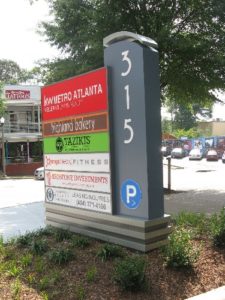
Translucent Vinyl
Translucent vinyl allows light to travel through it and is used for backlit signage like lightboxes. Translucent vinyl can come as cast or calendered vinyl and can come as pigmented or print. The Sign Brothers uses Orajet 8500 calendered translucent vinyl that lasts 5 to 7 years. To the right is an example of a lightbox with translucent vinyl applied to acrylic panels:
Cut Vinyl
Cut vinyl is almost always pigmented. Cut vinyl is used to make graphics of one or a few colors. The vinyl goes into a plotting machine, or die cutting machine that cuts the vinyl with a small blade, but leaves the backing paper in tact. Once the vinyl is cut, you can then peel up the excess vinyl (a process called “weeding”) to reveal the finished image. Cut vinyl can be calendered or cast.
Once cut vinyl is weeded, it then has to be taped. Taping cut vinyl allows you to remove it from the backing paper and apply it while keeping the weeded vinyl design intact. Vinyl can be taped in a variety of methods depending on it’s size. Here’s an example of a common way to tape larger sheets of cut vinyl:
Cut vinyl is more durable and cost effective than printed vinyl, but only works for simple graphics. If an image is more than two or three colors, or has lots of details, it’s much easier to use printed vinyl. The ink on printed vinyl will start to fade before the vinyl begins to fail, therefore cut vinyl graphics end up lasting longer than printed vinyl. You can learn more about how to apply cut vinyl here.
Here’s some examples of some finished cut vinyl signage:
Heat Transfer Vinyl
Heat transfer vinyl is used to create graphics on fabric. Heat transfer vinyl is similar to cut vinyl in that it is always pigmented, but it requires heat in order to be applied to its substrate. When heat transfer vinyl is heated and pressed against a fabric, it softens and bonds to the fibers of the fabric making a permanent seal. Heat transfer vinyl is commonly used to apply graphics on t-shirts and other fabric household items. It’s similar to cut vinyl in that it must be weeded and taped and works best with simple imagery. You should view website to see how it works.
Phototex
Phototex is a patented adhesive backed fabric that is removable and reusable. It’s great for temporary or long term graphics. Its unique removable adhesive is cured into the fabric, so it does not leave a sticky residue when removed from painted surfaces. For this reason, The Sign Brothers prefer to use Phototex when doing many short- to medium-term wall wrap installations.
Brightline
Brightline is a thin calendered vinyl made by a company called Grimco that is similar to Orajet 3165, but is 3 mils thick instead of Orajet’s 4 mils. It’s often used for posters and other indoor signage. It’s cost effective, but not as durable as Orajet or cast vinyl. It can be cut and printed on.
Mactac
Mactac is a manufacturer of a lot of different vinyls, but they have a specialty product called “Rough Rap” that can be applied to rough textured surfaces like rock and brick. Rough Rap lasts up to 18 months outdoors. When our clients want a design to have the look & feel of a mural painted on a brick wall, the Rough Rap vinyl is the product of choice.
Perforated Window Vinyl
Preforated window vinyl is a kind of vinyl that’s commonly used on windows because of its unique ability to feature an opaque image on one side and be almost completely transparent on the other. Preforated window vinyl has small holes in it allowing light to pass through. On one side the vinyl is black creating a transparent appearance and on the other the vinyl is white creating an opaque appearance. Graphics are printed and displayed on the white side creating the opaque side. Here are a few examples of how this looks in real life:
Conclusion
Vinyl is a huge part of today’s signage. While there are many attractive and durable sign materials out there other than vinyl, with all the options available, vinyl only continues to become a more versatile and cost effective option for creating graphics. Interested in learning how you can use vinyl to create cutting edge signage at your organization? Drop us a line and one of our signage experts would be happy to schedule a call with you.

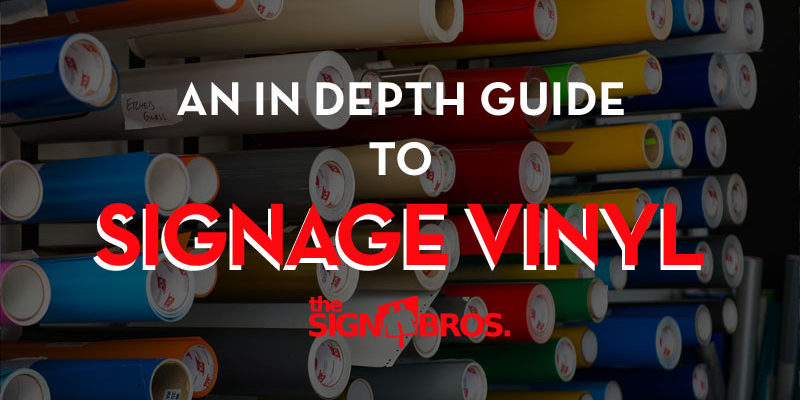

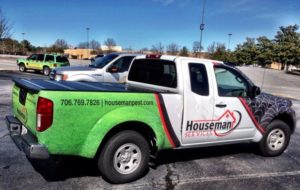
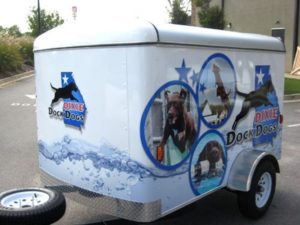
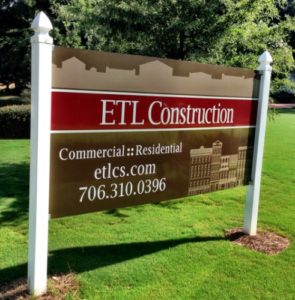
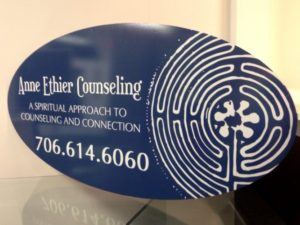
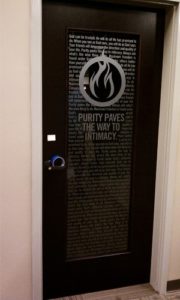
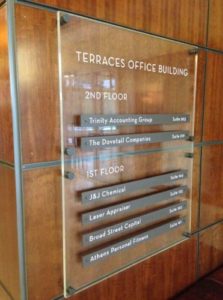
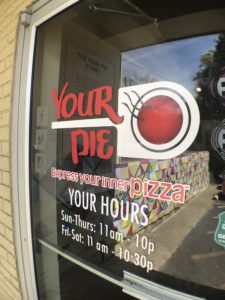
No comments yet. You should be kind and add one!
Our apologies, you must be logged in to post a comment.